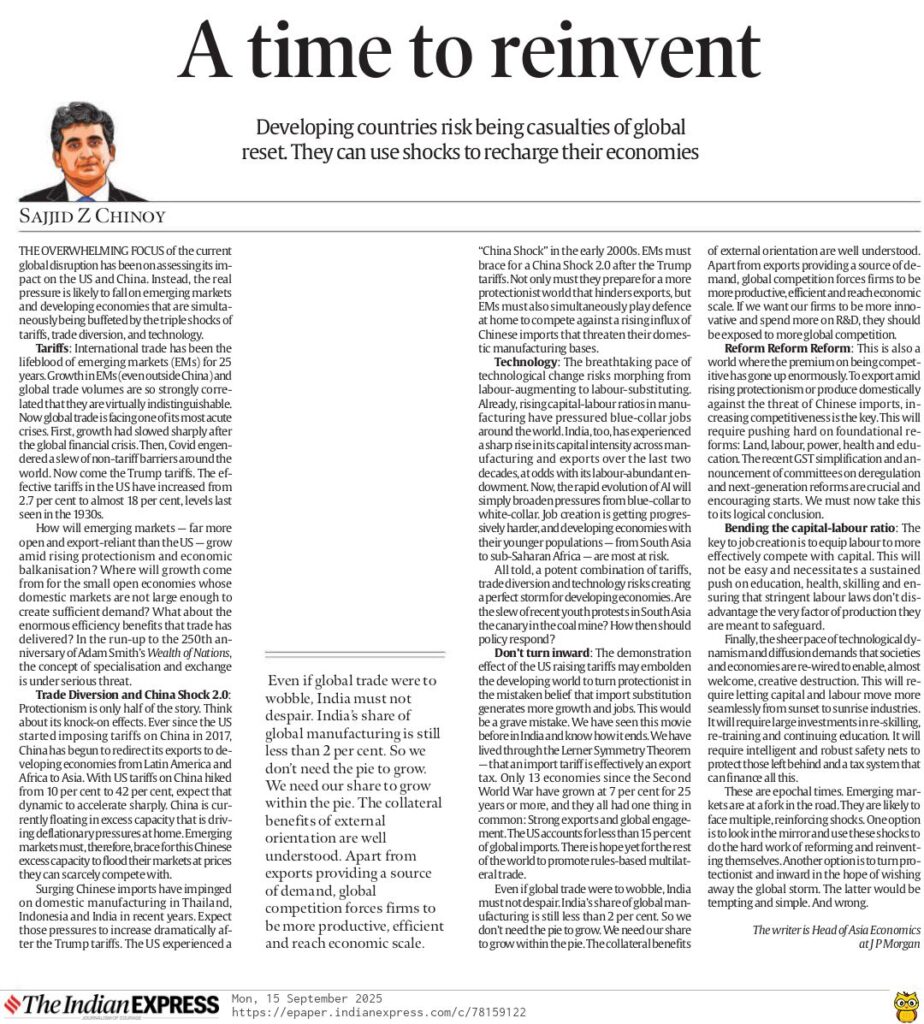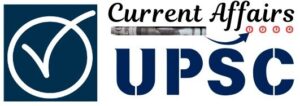
Exam Oriented Essential Issues Covered Under Editorials
ISSUE 01: The impact of current global disruption on emerging economies and developing economies.
ISSUE 02: Impact of trade divergence and China Shock 2.0 on domestic markets
ISSUE 03: The idea of protectionism as an economic policy.
ISSUE 04: Impact of technology on labour market.
ISSUE 05: India’s strategy in terms of tariffs.
ISSUE 01: The impact of current global disruption on emerging economies and developing economies
- Instead of the current global turmoil on the US and China, the real pressure is likely to fall on emerging markets and developing economies, which are simultaneously grappling with the triple shock of tariffs, trade diversions and technology.
- Now global trade is facing one of its most acute crises. First, growth had slowed sharply after the global financial crisis. Then, Covid engendered a slew of non-tariff barriers around the world. Now come the Trump tariffs. The effective tariffs in the US have increased from 2.7 per cent to almost 18 per cent, levels last seen in the 1930s.
ISSUE 02: Impact of trade divergence and China Shock 2.0 on domestic markets
- Ever since the US started imposing tariffs on China in 2017, China has begun to redirect its exports to developing economies from Latin America and Africa to Asia. With US tariffs on China hiked from 10 per cent to 42 per cent, expect that dynamic to accelerate sharply. China is currently floating in excess capacity that is driving deflationary pressures at home. Emerging markets must, therefore, brace for this Chinese excess capacity to flood their markets at prices they can scarcely compete with.
- Surging Chinese imports have impinged on domestic manufacturing in Thailand, Indonesia and India in recent years. Expect those pressures to increase dramatically after the Trump tariffs. The US experienced a “China Shock” in the early 2000s. EMs must brace for a China Shock 2.0 after the Trump tariffs.
- Way Forward (suggestions): Not only must they (EMs) prepare for a more protectionist world that hinders exports, but EMs must also simultaneously play defence at home to compete against a rising influx of Chinese imports that threaten their domestic manufacturing bases.
ISSUE 03: The idea of protectionism as an economic policy
- The demonstration effect of raising US tariffs may encourage developing countries to become protectionist, in the false belief that import substitution boosts growth and employment, while stronger exports and global engagement may be the correct economic policy.
- Example 01: Only 13 economies since the Second World War have grown at 7 per cent for 25 years or more, and they all had one thing in common: Strong exports and global engagement.
About Different Facts:
Objective Facts: Based on evidence and empirical data that can be verified.
Subjective Facts: Based on opinions or beliefs, rather than verifiable evidence.
Verified Facts: Information validated against authoritative sources, though the standard of evidence may be lower than for scientific facts.
Empirical Facts: Facts derived from direct observation and experience.
Brute Facts: It is a fact that has no explanation; it is fundamental and cannot be explained by a deeper or more fundamental fact.
Consensus Facts: The idea that something is considered true if a large group of people believes it is. This is relevant to subjective areas like society, culture, and art, where objective measurement is not possible.
Author: currentaffairs4upsc
UPSC


